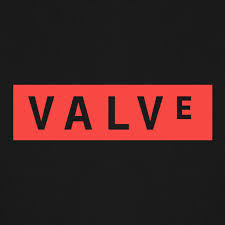Free Classifieds at UKAdsList.com - View Item Content by ID 8722805

UKAdsList > Business Opportunities > Other Business Ads > Item ID 8722805
Item ID 8722805 in Category: Business Opportunities - Other Business Ads
Cannot view this item. It could be pending, expired or deleted.
Below item is randomly selected from the same category and may have similar content.
Exploring ValveDirectoryList: Organizing Assets Effectively | |
When working on a Source engine project—whether it’s a small mod or a full-fledged game—organization is everything. A tidy, well-structured project not only makes development smoother but also improves performance and makes collaboration easier. One of the key tools in achieving this is the ValveDirectoryList. While it usually works quietly in the background, understanding how it functions can help you keep your game assets well-managed and your project running efficiently. What Is ValveDirectoryList? ValveDirectoryList is essentially a set of instructions that tells the Source engine where to find game content. This includes things like textures, models, sounds, maps, and scripts. When the game starts, it looks at this list to know which folders or packages to search through, and in what order. This system allows developers and modders to structure content in layers—so that custom files can override default ones, or specific parts of a project can be grouped together cleanly. Why It Matters Game projects can get messy fast. As your asset library grows, keeping track of where things are—and ensuring they’re being used correctly—becomes more challenging. ValveDirectoryList provides a way to control that flow of information. Here’s why it’s useful: Custom Content Management: You can introduce new content without affecting the original game files. Priority Control: It lets you decide which folders or packages the game should check first. Cleaner Workflow: Keeping assets in clearly separated folders improves clarity and reduces mistakes. How It Helps With Asset Organization Imagine your game has several versions of a texture or sound. With ValveDirectoryList, you can set things up so the game always picks the version you want it to use. You can also separate assets into folders by type or function—like "new_weapons", "custom_maps", or "extra_sounds"—making everything easier to manage. This is especially useful for large teams, where multiple people are working on different parts of the game at once. Best Practices for Using ValveDirectoryList Organize by Category: Group related assets together. For example, keep all your environment textures in one folder and your UI elements in another. Use Clear Folder Names: Make it obvious what each folder contains. It’ll save you time when searching or debugging. Control Load Order: List your folders in an order that reflects their importance—custom content first, base content last. Keep It Lean: Don’t include folders you don’t need. A shorter list is easier to manage and loads faster. Test Regularly: As you add or rearrange files, test often to ensure everything is loading as expected. Common Issues to Watch Out For Assets Not Showing Up: This often means the folder isn’t included in the directory list, or it's listed in the wrong order. Wrong Version of a File Loading: If two files have the same name in different folders, the one listed first gets loaded. Missing Dependencies: If your mod depends on files from the original game, make sure those folders are still part of the list. Conclusion ValveDirectoryList may not be the first thing modders think about, but it plays a vital role in keeping Source engine projects organized and running smoothly. By taking control of how your game accesses its assets, you can create a cleaner, more efficient development environ  | |
| Related Link: Click here to visit item owner's website (0 hit) | |
| Target Nation: All Nations Target City : All Cities Last Update : 26 April 2025 10:38 PM Number of Views: 51 | Item Owner : valvedirectorylist Contact Email: (None) Contact Phone: (None) |
| Friendly reminder: Click here to read some tips. | |
UKAdsList > Business Opportunities > Other Business Ads > Item ID 8722805
© 2025 UKAdsList.com
USNetAds.com | GetJob.us | CANetAds.com | AUNetAds.com | INNetAds.com | CNNetAds.com | Hot-Web-Ads.com | USAOnlineClassifieds.com
2025-04-27 (0.334 sec)